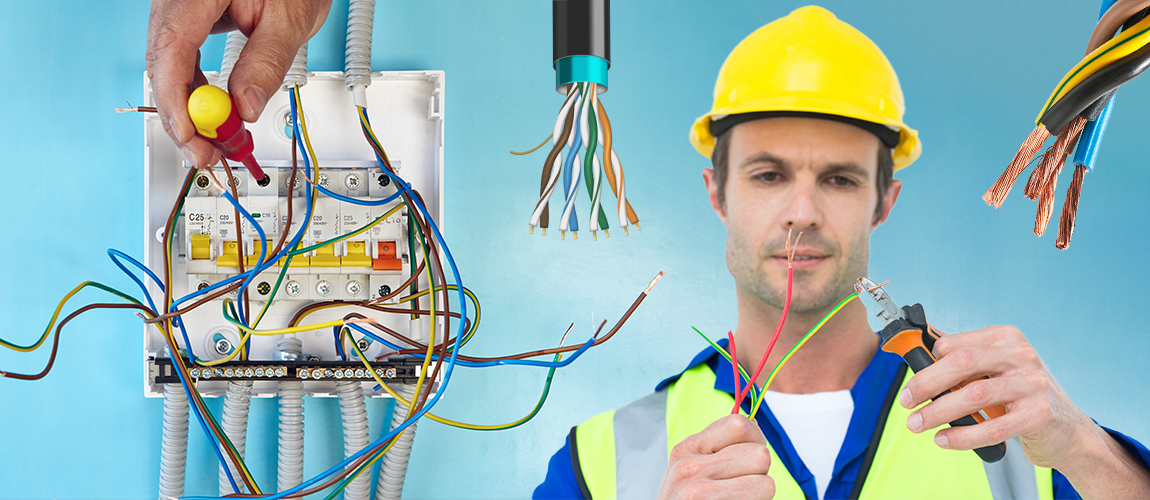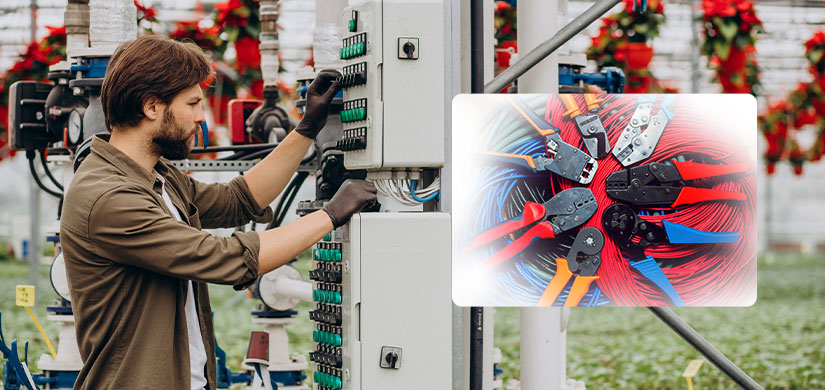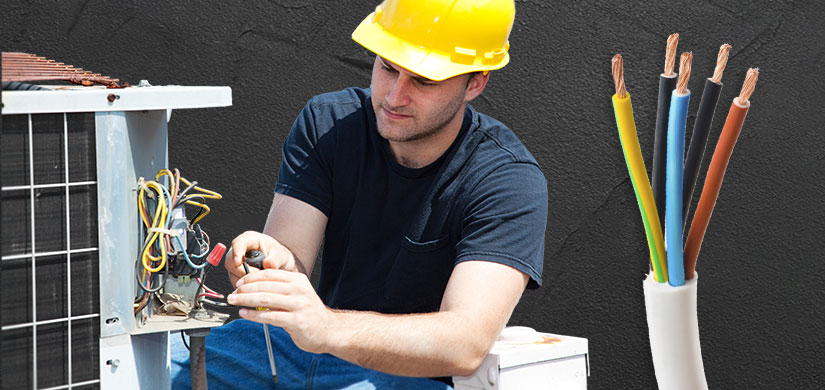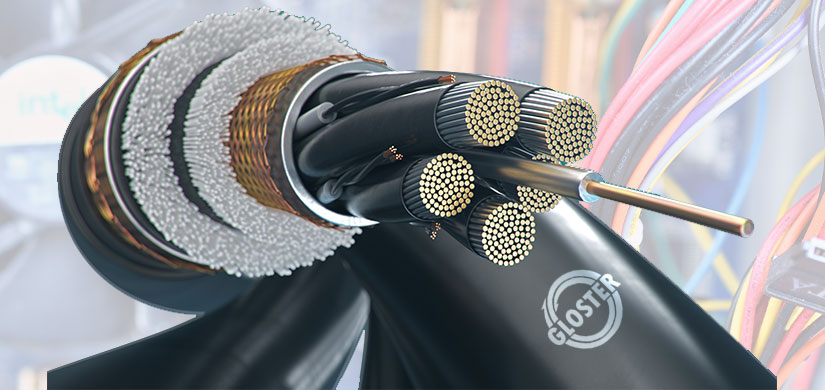
Selection Factors for Electrical Power Cables
Cables are the lifeblood of industries as diverse as construction, energy production, automotive manufacturing, and telecommunication. Without cables, these industries would not function as cables power them.
For example, A high-voltage power line use cables to transport electricity from power plants to businesses and homes. Electrical power cables connect the engine to the battery, and heavy-duty cables lift and move large loads during construction.
For smooth operation of these cables and avoiding failure, it requires a proper selection of these cables. The industry should consider cable installation, construction, and operation factors, for an appropriate cable selection.
Gloster Cables manufactures a wide range of power cables for several industries for their various applications.
Factors for Selecting Electrical Power Cables for Different Industrial Units

An appropriate cable selection ensures the reliability of the power supply and the safety of devices and humans. An improper cable selection can be vulnerable to failures. Cable selection for industries requires additional knowledge about the cable system’s construction, service conditions, type of load served, mode of operation, and many more.
Listed are the primary factors to consider for selecting power cables for industrial usage.
Cable Installation
The cable installation can be outdoors or indoors based on the distribution system and load served. For a given distribution system, several types of cables system are available for carrying electrical energy. And the selection of an electrical system gets influenced by local conditions, existing company policies, or experience. During cable installation, the design of the conduit system should minimize the number of conduit bends and distances between manholes but specify the pulling tensions. Correct bending radius needs to get maintained to avoid unnecessary stress points.
Type of Conductor
Industries should use cables of copper or aluminum considering their environmental conditions, maintenance, and workmanship. The price of a copper cable is higher than an aluminum cable for the same voltage rating, type, insulation, cross-sectional area, installation, continuous current rating, etc.
These conductors can get arranged to form a single-conductor or three-conductor cable. Single conductors are easy to install, splice, and form multiple-cable circuits. Shielded single conductor cables can carry high shield currents. Three-conductor cables with jackets have the lowest reactance.
Type of Insulation and Finish Covering
The selection of cable insulation and finish covering depends on the type of installation, ambient operating temperature, service conditions, type of load served, etc. Gasoline pumps require wire that can withstand gasoline vapors. Some electronic applications using circuit boards need wire insulation with solder resistance.
Cable insulation should withstand the voltage stresses experienced during operating conditions. So, cable selection should depend on insulation level -100%, 133%, or 173%.
 100% Insulation
100% Insulation
Cables in this category (also referred-grounded systems) get applied where the system has relay protection which clears ground faults within 1 minute.
 133% Insulation
133% Insulation
The system with relay protection that clears ground faults within 1 hour can have cables of 133% insulation. These cables get referred to as low-resistance grounded or ungrounded systems.
 173% Insulation
173% Insulation
Where the time for de-energize the ground fault is indefinite, cables with 173% insulation gets applied. These cables are suitable for ungrounded and resonant grounded systems.
 Shielding
Shielding
Power systems with no shield or metallic covering have an electric system partly in the air and in the insulation system. In high and medium voltage, surface discharges will take place and cause ionization of air particles, deteriorating insulation, and finish covering.
The shielding of cables used for medium-voltage applications in various industries depends on
For non-metallic cables operating above 2kV, shielding depends on
For rubber and thermoplastic-insulated cables, insulation shielding requirements depend on voltage limits, as standards set by ICEA.
Voltage Rating and Voltage Drop
The cable's rated voltage generally gets specified as a dual rating, such as 6.6Kv (UE)/11 Kv (E). UE means we can use cable in an unearthed or non-effectively earthed system, and E means can use cable for a specified voltage in a solidly earthed system.
The resistance and reactance of cables cause a voltage drop when current flows, affecting the connected loads. We need to calculate steady-state voltage drop and acceleration-state voltage drop; during the starting of large loads. The steady-state voltage drop at the load terminals should not be more than 10%, and the acceleration-state voltage drop at the load terminals not be more than 15%.
Current Carrying Capacity
The current carrying capacity of a cable depends on its thermal heating. And it is a significant aspect in selecting the optimum size of the conductor. An underground cable's safe current carrying capacity depends on the maximum permissible temperature rise. NEC has published the current capacity for various-sized cables, and ICEA lists current ratings for various types of insulation and installations condition.
Cable Size
The proper sizing of an electrical cable ensures that the cable can
The cable sizing method gathers data about the cable, installation condition, the load to get carried, etc. And then calculate the minimum size cable based on current carrying capacity, voltage drop considerations, short circuit temperature rise, earth fault loop impedance, etc.
Short Circuit Current Withstand
The cable's short circuit current should depend on the circuit opening time for short-circuit conditions. In other words, a cable should hold without any thermal damage until the (time-limit) fault gets removed by the switching device, like the circuit breaker or fuse.
The short circuit rating gets published for the conductor and the screen/armor wire based on cable construction. The conductor fault level gets known as the symmetrical or three-phase rating, whereas the screen/armor fault level is known as the asymmetrical or single-phase rating.
Importance of Right Power Cable Selection

Power cables are critical support systems in manufacturing plants, engineering houses, and other industries. And few reasons to choose a suitable power cable-based application, environment, and other factors are

High-quality copper or aluminum medium-voltage cables for industrial purposes offers high electrical conductivity and resistance to corrosion.

High-voltage EPR or Ethylene Propylene Rubber cables are suitable for utility applications, such as connecting power plants to substations.

A properly shielded cable reduces electrical noise created due to electromagnetic signals, reduces the level of electromagnetic radiation, minimizes capacitively coupled noises, and helps protect high-voltage cables carrying solid insulation.

Cables installed in a raceway, underground electrical duct, or cable tray should consider conductor configuration, raceway or cable tray fill, cable's physical limitation, installation equipment, etc., to avoid mechanical stress and cable damage.

Cable sizing calculation helps calculate voltage drop, current carrying capacity and short-circuit temperature rise. For example, the longer the cable length, the higher the voltage drop.
Gloster Cables for Electrical Power Cables

Gloster Cables is a leading wires and cables manufacturer and supplier, serving various industrial, commercial, and domestic projects for around 25 years. The organization manufactures a range of power cables for industrial usage, considering installation methods, environmental conditions, and application. By supporting industries with an appropriate and quality power cable, Gloster Cables support their proper functioning and ensure safety.
CONTACT US